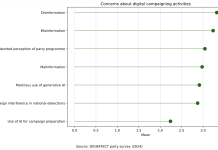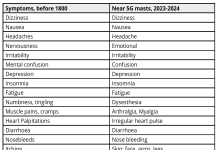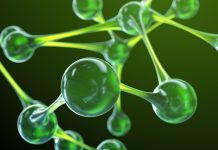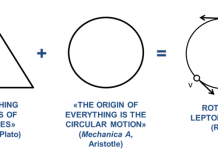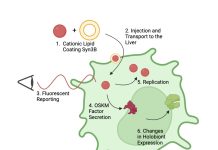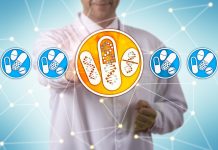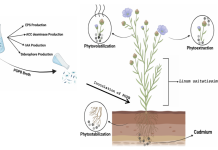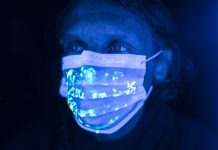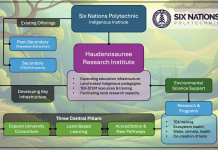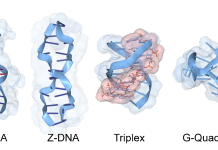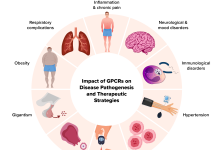Open Access Government produces compelling and informative news, publications, eBooks, and academic research articles for the public and private sector looking at health, diseases & conditions, workplace, research & innovation, digital transformation, government policy, environment, agriculture, energy, transport and more.
Home 2025
Archives
Horticulture: Hormonal therapy for grapevines
Jim Willwerth, Assistant Professor and Researcher at Brock University, Canada, in this horticulture discussion, delves into what we need to know about hormonal therapy for grapevines, including plant growth regulators.
Digital technology and electoral democracy: Introducing the DIGIEFFECT project
Gabriela Borz, Cristina Mitrea, Anna Longhini, Thomas Montgomerie, Rémi Almodt and George Jiglău from the University of Strathclyde and Babeș-Bolyai University, investigate the relationship between digital technology and electoral democracy through the DIGIEFFECT project.
Inclusive public space project: Law, disability and accessibility
Anna Lawson, Maria Orchard, Dick Houtzager, Sanjay Jain, Agnes Meroka-Mutua, Lawrence Mute, Barry Whaley, and Sofia Raseta discuss the Inclusive Public Space (European Research Council) Project and examine the role of law and policy in improving the accessibility and inclusiveness of city streets.
Defining Electromagnetic Hypersensitivity (EHS)
Michael Bevington, Chair of Trustees at Electrosensitivity UK, examines the history of Electromagnetic Hypersensitivity (EHS) over the past 275 years, highlighting key 18th-century discoveries and early reports of health issues related to electromagnetic fields (EMFs).
Transforming education: How museum visits revolutionise learning
From enhanced critical thinking to interdisciplinary learning, museums offer tangible educational advantages. This Q&A answers key questions about museum visits, including practical tips for teachers and the impact of sustained museum programs.
Chronic pain and healthcare education in Canada: Bridging the divide
Hansel Lui from the Michael G. DeGroote Institute for Pain Research and Care discusses inadequacies in healthcare education regarding chronic pain management in Canada and opportunities to close these gaps.
Advancing materials science: Translating innovative research to commercial prospects
Aarthi Janakiraman, Research Director of the Advanced SciTech Division at Everest Group, focuses on advancing materials science and translating innovative research into commercial opportunities.
The role of neutrinos, quantum mechanics and special relativity in baryogenesis
Constantinos G. Vayenas from the University of Patras and the Academy of Athens, explores the roles of neutrinos, quantum mechanics, and special relativity in baryogenesis.
Tracing evolution’s blueprint: Minimal genome life and the engineering of synthetic endosymbiosis
Roksana Riddle and Christopher H. Contag from Michigan State University discuss the concept of endosymbiosis, how it has evolved, and present strategies to engineering endosymbionts and their applications in developing innovative therapies.
CYP genes and haplotypes in personalised medicine
Brian Tait, Chief Scientific Officer at Haplomic Technologies Pty Ltd, focuses here on CYP genes, haplotypes, and their applications in personalised medicine.
Microbially-assisted phytoremediation of cadmium
Arpita Bose, PhD, Associate Professor and Nida Zainab, PhD Researcher at Washington University in St. Louis, guide us through the process of microbially-assisted phytoremediation of cadmium.
Revolutionising indoor air quality to stop pandemics with Germicidal Ultraviolet (GUV) technology
Indoor air quality is a silent public health crisis, harbouring pathogens that contribute to billions of illnesses annually. Addressing this requires urgent attention, and Germicidal Ultraviolet (GUV) technology offers a powerful solution to combat airborne threats.
Can premenstrual symptoms help improve women’s healthcare?
Professor Belinda Pletzer from Paris Lodron University of Salzburg explores if the assessment of premenstrual symptoms can help improve women’s healthcare.
Limitless literacies: Exploring a transdisciplinary approach
A transdisciplinary approach liberates the education of literacies as a limitless enterprise, argues Patriann Smith, Ph.D.
Supporting women’s entrepreneurship in Ghana
Dr Jennifer Jennings discusses her colleague’s field research related to women’s entrepreneurship in Ghana and the inferences for economic development organizations.
Towards Haudenosaunee research sovereignty: Investing in local research and training to support community development
The article emphasizes the importance of Indigenous Research Governance in Six Nations of the Grand River, addressing the harmful historical effects of academic research on Indigenous Peoples and advocating for structural changes that promote Indigenous data sovereignty and community ownership of research.
Healthy aging: How science and daily habits preserve brain function
Key nutrients like omega-3 fatty acids, curcumin, and NAD+ are important for maintaining cognitive function, but their effective delivery to the brain is hindered by the blood-brain barrier (BBB) and age-related declines in nutrient transport. Dr Rebecca Crews and Heather Makar explore the importance of overcoming these delivery challenges to enhance strategies for cognitive longevity and healthy aging.
Quantitative panel studies of the political economy of the cape colony
Erik Green, Professor at Lund University in Sweden, investigates the legacy of a settler colony by focusing on quantitative panel studies of the political economy of the Cape Colony.
Training your genome
Founder and President of InsideOutBio, Alan Herbert, explores the evolving understanding of genome information storage, and the significance of repetitive sequences called flipons in genome training. These flipons can alter their shape without breaking DNA and are vital in cell biology, especially in responding to environmental stress.
AI-driven innovations in GPCR ligand synthesis for treating inflammatory diseases
This article explores the significance of G Protein-Coupled Receptors (GPCRs) in therapeutic drug development and strategies for advancing GPCR-targeted therapies, including the use of agonists, antagonists, biased agonism, and allosteric modulators.


